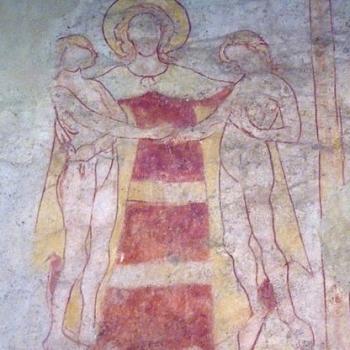This is the second in a two-part series reflecting on the debate over current models of youth ministry. Part One explored the challenges inherent in the popular "attractional model."
 Every year over 100,000 teens and young adults journey to the town of Taizé in France to spend time in the Taizé Community, an ecumenical Christian monastic order. What draws these youth to this town? It's not the promise of flashy media, wacky games, loud music, and a party atmosphere. No, these young people come to spend a week experiencing the monastic way of life. Nowhere in their daily routine will you find activities that mimic pop culture, designed to entertain. Rather, the youth spend their days in morning prayer, Bible study, small group discussion, midday prayer, workshops, silence, and evening prayer. Instead of seeking distraction, these young people come to experience contemplation and to find God in moments of quiet and peace.
Every year over 100,000 teens and young adults journey to the town of Taizé in France to spend time in the Taizé Community, an ecumenical Christian monastic order. What draws these youth to this town? It's not the promise of flashy media, wacky games, loud music, and a party atmosphere. No, these young people come to spend a week experiencing the monastic way of life. Nowhere in their daily routine will you find activities that mimic pop culture, designed to entertain. Rather, the youth spend their days in morning prayer, Bible study, small group discussion, midday prayer, workshops, silence, and evening prayer. Instead of seeking distraction, these young people come to experience contemplation and to find God in moments of quiet and peace.
In contrast, the attractional model of youth ministry (or as I have dubbed it "the DIS-strational model") suggests that mimicking the practices of our consumerist entertainment-based culture may be the most effective way to draw young people to Christianity, showing teens that church can be just as fun and exciting as going to a rock concert or the local amusement park. "We are in competition with popular culture for the attention of youth," proponents of this model might argue, "so why not fight fire with fire?" Indeed, what's wrong with using entertainment-fueled events and activities if the ultimate result is that teens become engaged in the Christian faith? To be fair, this approach works well for some ministries, particularly those financially able to showcase their youth events with big screen TVs, lighting effects, live bands, and eye-popping youth room designs. And for my evangelical brothers and sisters for whom a primary concern of youth ministry is the very salvation of teens, it's perfectly understandable that they want to do whatever it takes to get young people in the door.
To put this another way, you are the expert at what's best for your own ministry so if the attractional model works for you and helps to draw teens closer to the heart of God, more power to you. But for those for whom this model of ministry is more of a distraction for teens, who don't have budgets that allow for flashy events and facilities, and who are looking for a way to deepen their teens' faith, I want to suggest that we give ourselves permission to set aside this attractional model for awhile. What if we let go of the idea that pop culture provides the best tools for drawing youth to the faith, and instead looked to scripture and the life of Christ for a new way forward?
Believe it or not, there is a biblical narrative that speaks to the debate over attractional ministry. In the Gospel of Mark, we find a story of people coming to Jesus for healing (Mk. 1:29-39). The whole town has gathered, conjuring up images for me of the film Field of Dreams, with perhaps a long line of people snaking their way up to the home where Jesus is staying. The message is clear: if you want healing, this is the place you need to come. And Jesus does receive the crowd and he does heal. By day's end, Jesus is likely exhausted and still more people wait for him. We might imagine that as the lateness of night sets in, crowds of the sick lay sleeping outside Peter's house, finding space wherever they can, waiting for Jesus to resume his healings the next day. Early in the morning, while it's still dark, Jesus does a very strange thing—he sneaks off. We might say he "takes a time out," tiptoeing out of the house, going off into the peace and quiet of the wilderness to pray and seek God's guidance. Upon Jesus' return, Mark gives us little detail about his conversation with Peter, but we can imagine Peter's response: "Uh, Jesus, what are you doing out here? We've been looking all over for you. This is no time to be off praying. There are people back at the house who need you. They've been waiting all night. We've got a good thing going on here. Word has really gotten around and you are the going to be the next-big-thing here in Capernaum. Let's not mess this up."
Peter's plan is clear; as was the custom of the time, Jesus and his disciples would set up shop in this house with Jesus serving as the local healer, attracting the crowds, and the disciples acting as brokers and gatekeepers for those seeking their services. But at this point in the story, Jesus does a second strange thing. Without a word of explanation, almost as if he hasn't heard a thing Peter has said to him, Jesus replies, "It's time to go to the next town. I have a message to deliver. That is what I came to do." And they leave the crowds behind.





